We were having dinner in Saint-Rémy-de-Provence, France when I received the call. As soon as I saw the incoming call from Mike Henriques on my iPhone screen I knew there would be no spring term and my heart sank.
In the week preceding the call we had been exploring Provence by day and planning the logistics of a modified spring term by night (and during our daughter Lucia’s naps). We purchased hand sanitizer in bulk and researched group train and hotel reservation cancelation policies. Confirmed cases were beginning to tick up in Madrid, so we planned to travel by van instead of high-speed train, extending our stays in rented houses in rural parts of Catalonia and Andalucía, and visiting new corners of our home region, Castilla y León. There might be no Real Madrid soccer match, visit to the Sagrada Familia, flamenco performances, or student navigation challenge on the Madrid Metro, but we still believed we could deliver the most essential parts of the Proctor en Segovia experience — life with a host family in Segovia immersed in Castilian language and culture.

Each term is customized based on local cultural events, season and weather, and student interest, and we hoped this term would be no different. Spring is perhaps our favorite Castilian season, and we could picture our new group of students comments on the impossibly bright green fields just visible from the Mirador de la Canaleja, contrasting with Segovia’s terracotta roofs and sandstone. They would notice the stork nests in trees of the Alcázar (castle) plaza and atop twelfth century Romanesque churches. And they would jog or mountain bike alongside fields of bright red poppies. They would soon be immersed in rapid-fire castellano at host family meals, experience Thursday market Spanish class outings with Rosa and María José, afternoons in Jesus’ metal arts studio, and cooking class with Laura in our peculiar kitchen at the school on Thursday evenings.
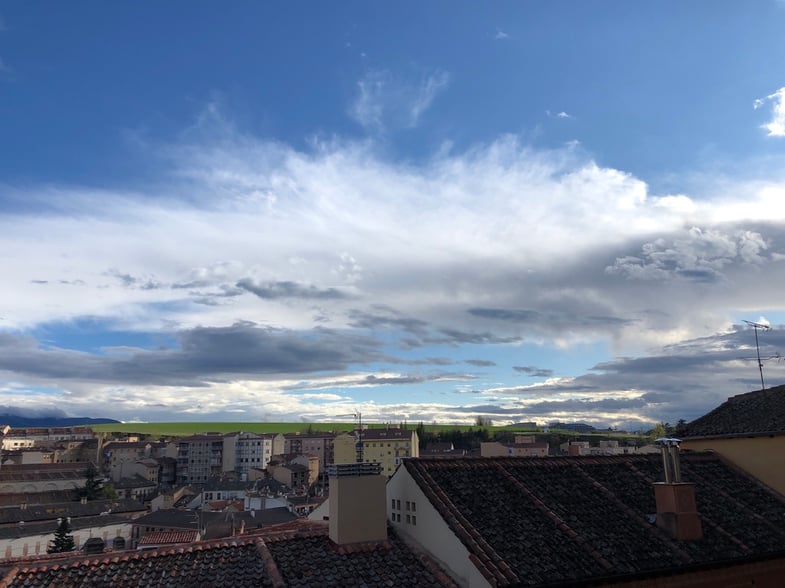
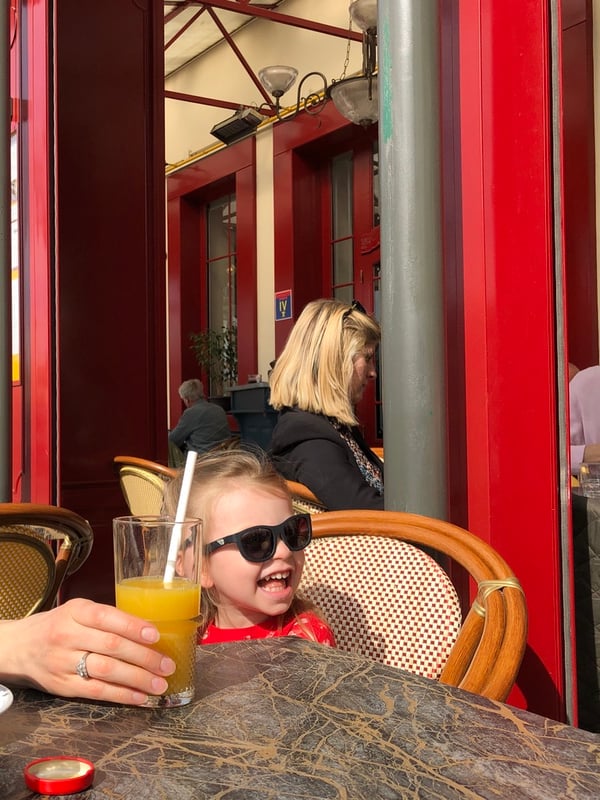
In the twenty-four hours immediately before Mike’s call, however, reality began to set in. From our Airbnb in Saint-Remy we streamed Televisión Española and learned that schools in Madrid, part of La Rioja, and the Basque Country would close the following day. On El País’ YouTube channel we watched COVID-19 briefings at noon every day where the calm, collected Fernando Simón (Spain’s Dr. Fauci), director of the Ministry of Health’s Centro de Coordinación de Alertas y Emergencias Sanitarias (say that three times quickly!) used increasingly alarming language.
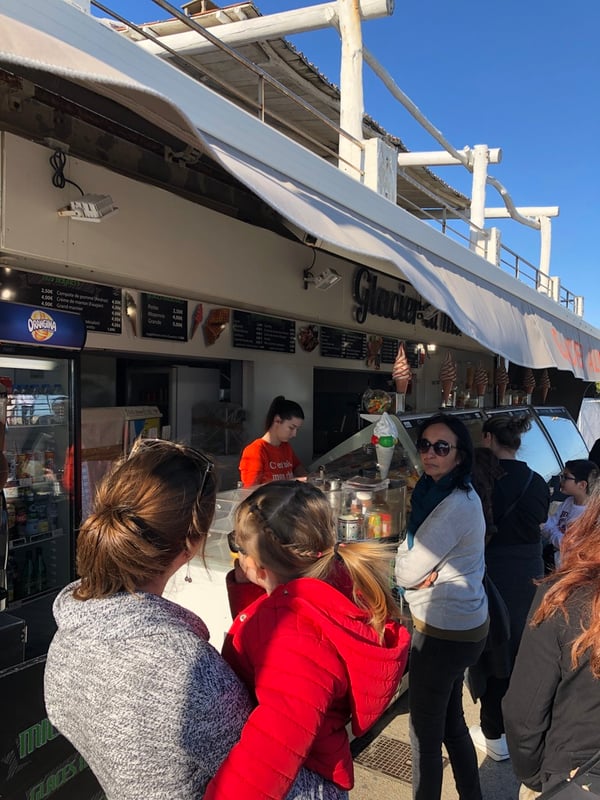
Yes, it seemed that the virus was spreading more quickly in Spain than in France, but the COVID-19 news seemed at odds with our surroundings. The French seemed to be making the most of life before the impending quarantine. Restaurants in Saint-Remy and ice cream stands at the beach in Saintes-Maries-de-la-Mer were packed and the double kiss was still the standard greeting. After a series of frantic WhatsApp messages from metal arts instructor Jesús warning of the imminent closure of the Spanish border and increasingly dire warning emails from the U.S. Embassy in Madrid (“arrange for immediate return to the United States, unless [you] are prepared to remain abroad for an indefinite period”), we began the long drive back to Segovia. Later that night the European travel ban went into effect. We decided that rather than wait in long lines at the airport in Madrid (Spain’s epicenter) — and as we later saw upon reentry into the U.S. — it would be safer for the moment to remain in Segovia. We would be teaching online from our home in Segovia.
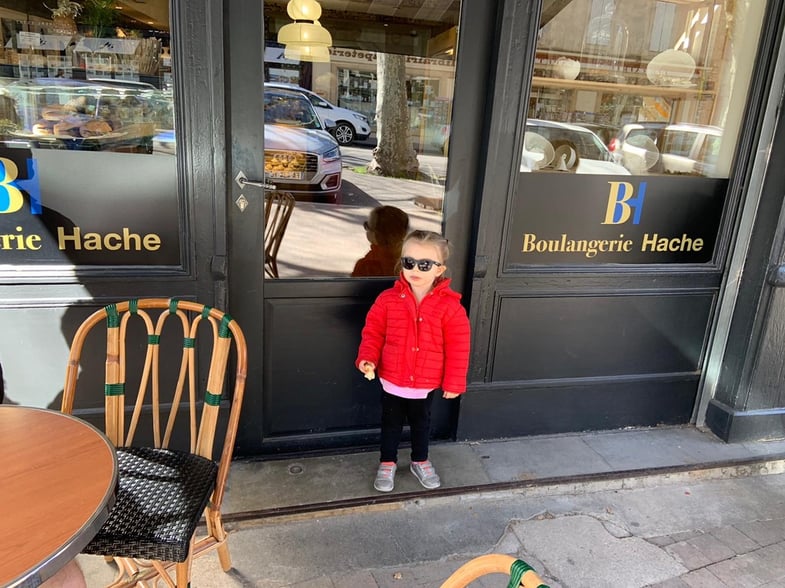
First Lucia had to pick out some of her favorite pastries from our favorite neighborhood boulangerie.
The drive back was punctuated with rain, sun, snow, police checkpoints and military convoys. There were almost no other cars on the road for kilometers and kilometers, only long lines of trucks. We arrived home and were shocked by the contrast between Segovia’s vacant streets and shuttered stores and the bustle of Provence. I remember Lucia’s question, “¿Papá porque están cerradas todas las tiendas?” (“Dad, why are all of the stores closed?”) as we walked from the parking garage to our apartment.
Our spring group members were constantly on our minds in those first days. We felt an acute sense of disappointment and sadness for them. They had exhibited so much energy and enthusiasm via email. We very much hope that they will have the opportunity to study abroad in Spain in the future.

An emergency services unit of the Spanish army was immediately mobilized during the “State of Alarm.” One of my favorite mental images of this pandemic is of a soldier feeding the pigeons as he took a break to eat a bocadillo in the plaza.
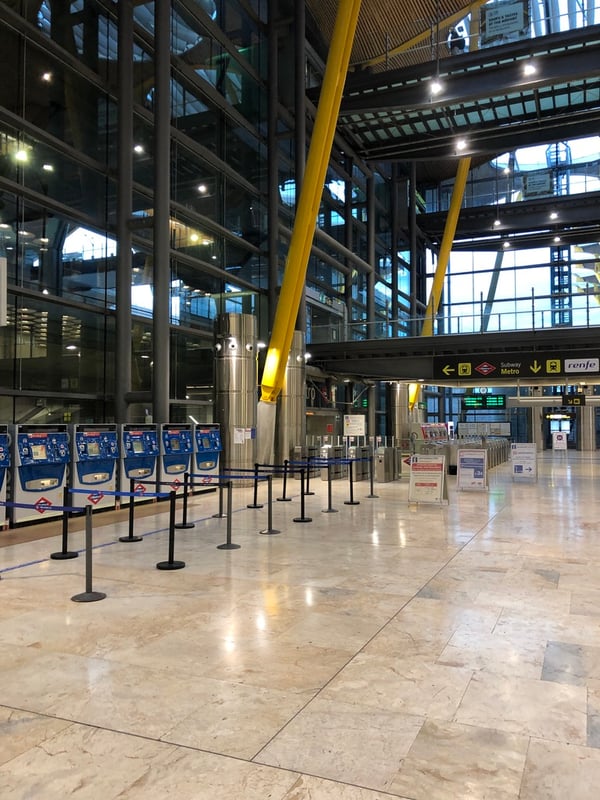
The Madrid airport's T4 in late March.
We were amazed by Segovians’ compliance to stay-at-home orders. Here "la calle" or the streets, parks, plazas, and neighborhood restaurants and cafés are an extension of the living room. This essential part of Spanish social life and culture came to a halt overnight. On my trips to the supermarket it felt as if I were walking through the streets of the old quarter at 4 am on a Tuesday morning when going to meet a new group of students rather than at 8:00 pm on a weekday. Normally tapas restaurant-bars would be overflowing, literally, into the streets as kids played impromptu games of soccer in the Plaza Mayor or below the aqueduct. Couples of all ages would be strolling arm in arm on their evening paseo. The sounds of the bustle of everyday life in a Spanish city were replaced with silence and the chirping of birds, strangers no longer acknowledged each other as they passed on the street, and in the supermercados shoppers wore masks, gloves and serious expressions on their faces. We could not believe our own eyes.
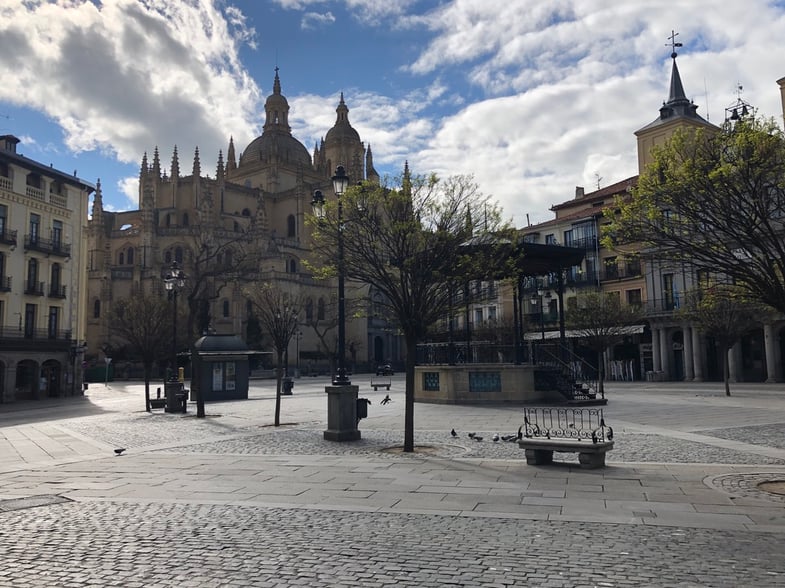
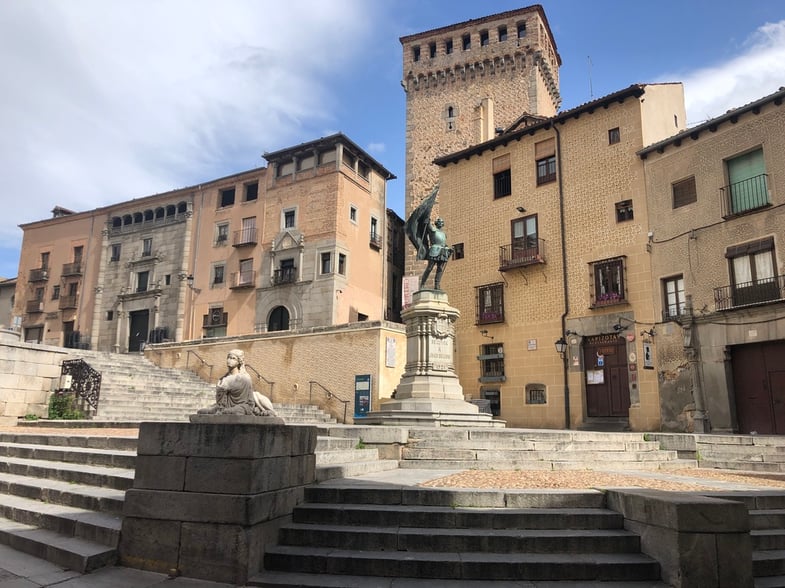
Spain has faced incredible challenges over the past two months and will face perhaps even greater challenges going forward. Some of the headlines have reached the U.S. An excellent national healthcare system that was the pride of many Spaniards was pushed to the brink of collapse. Although the data is incomplete it seems that healthcare worker infection rates and per capita death rates are alarmingly high. An economy highly dependent on tourism is paralyzed. Spaniards of our generation — in their 30s and 40s — worry that they are facing another lost decade (the first occurring immediately after the “Great Recession” of 2007-2008) as some economists warn of a “lost generation.” The Segovia community has been devastated by nursing home and hospital deaths now in the hundreds.
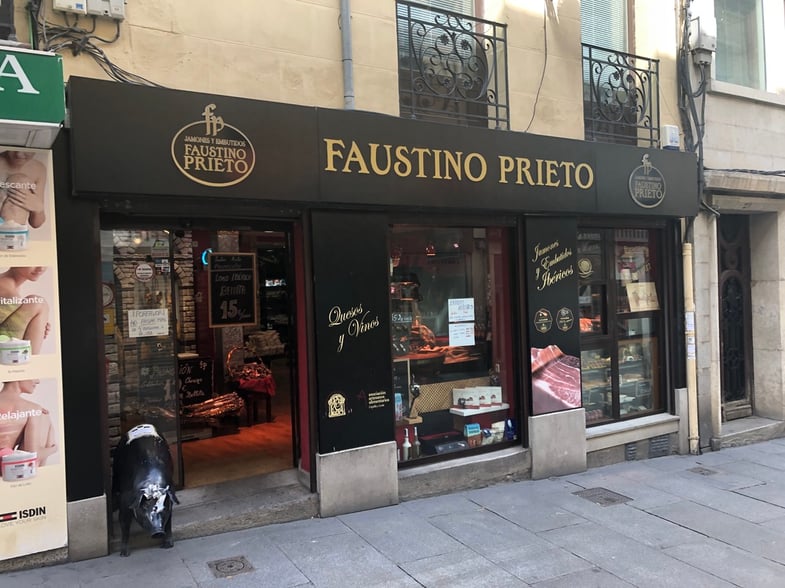
Is jamón a "bien de primera necesidad" (a "necessity good")?
Being compelled to stay in a small apartment with a 2.5 year-old has not always been easy. I am certain that challenges will not be the memories that stick with us long after Cuarentena 2020. We know that many are alone during this period, and we feel especially lucky to have each other. We will remember all of the family time and the chance to cook and bake, read and sing with Lucia every day. We have watched her art evolve in fascinating ways (that perhaps can only captivate a parent). We have a renewed appreciation for the natural world. One week ago, when children were permitted to leave their homes for the first time in six weeks, we found ourselves on the now wild banks of the Eresma river, the playground of ducks and even a lone deer having a drink! Stone steps and paths are overgrown with grass and flowers peek through the cobblestones. We will remember reconnecting with old friends via videoconference and, when we do run into friends and acquaintances on the street, taking the time to stop, slow down, and truly listen.
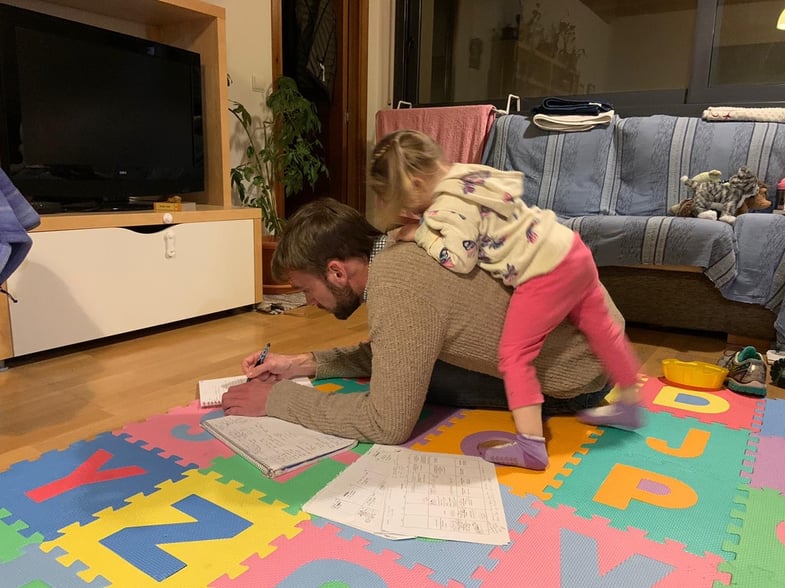

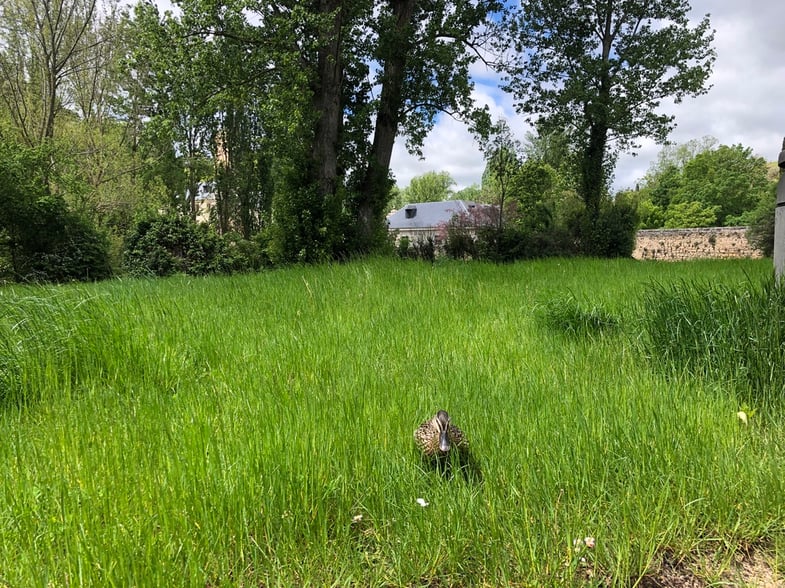
In many ways our communities seem stronger. Every day at 8:00 pm we gather at our front door and applaud for five minutes as a gesture of thanks to the healthcare workers and others hard at work. After neighbors converse from their balconies almost as if they were at the neighborhood café. They check in, inquire about family members, offer assistance, share recent headlines and, occasionally, complain about politicians and policy. Up the street, but still very much within earshot, a man plays songs on the saxophone or dulzaina (a traditional instrument), two different tunes every single day. When he finishes to the applause of the neighborhood he gives a quick pep talk usually concluding with, “¡viva los sanitarios!” Lucia dances in the street; the neighbors are her audience. The vecinos comment on her outfit or hairstyle and ask her what she has done that day. Next the police drive through the principal streets, sirens occasionally blaring, as if saying thanks for good behavior and sacrifice. On some days the police drive with windows down, blasting the 2020 version of “Resistiré” (“We will withstand”), a song recorded remotely by more than thirty Spanish pop stars that has become the anthem of this spring. One afternoon two police cars drove up our tiny, narrow street — not wide enough for a van to make the turn at its end — with lights flashing and “Resistiré” playing from the car stereos. They paused at our building to wave to Lucia and her 1.5 year-old neighbor. Ironically, this pandemic has brought us closer to our neighbors. We now have the time and reason to hear more details about their lives, jobs, families, and hobbies.
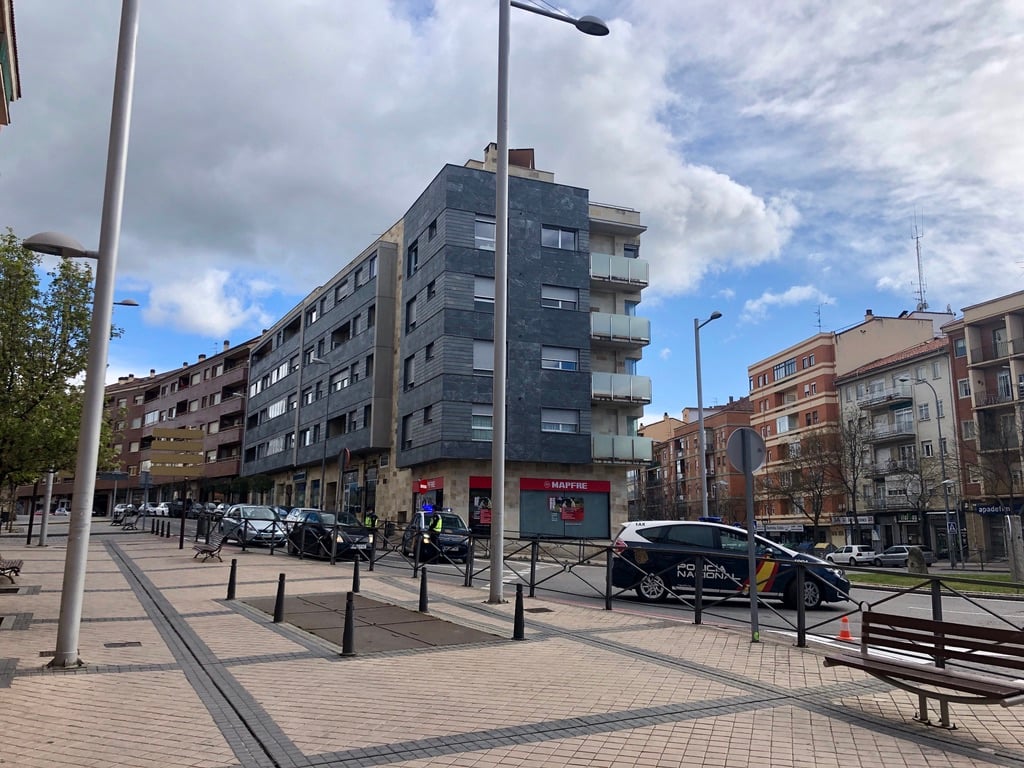
A police checkpoint in Segovia.
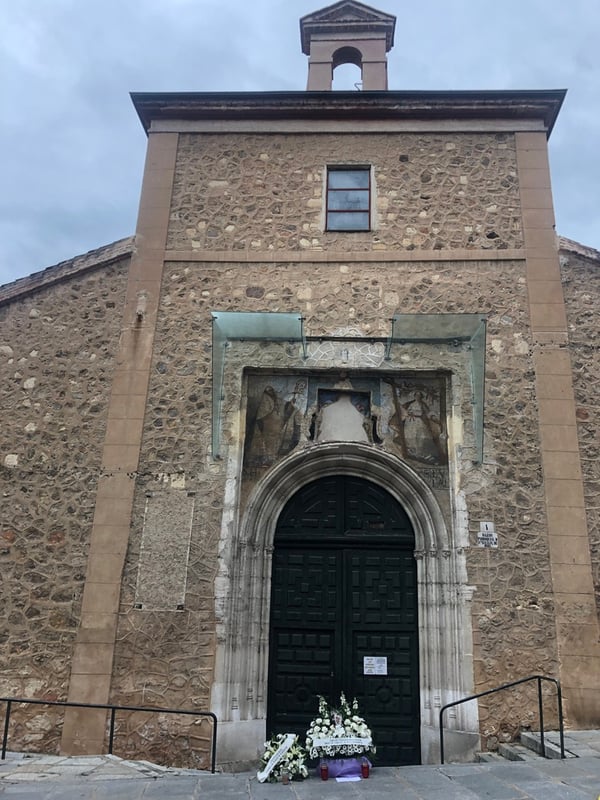
Semana Santa (Easter Holy Week) processions and masses were canceled (for the first time in recorded history?)
It is not only expressions of solidarity that give us hope but actions we have read about in text messages. A physical therapist friend collected donations and then emptied out his own stock of medical supplies to donate to the public hospital. A friend’s daughter, in nursing school, volunteered at the same hospital while her husband ran a residencia, housing volunteer doctors and nurses from other parts of Castilla y León. Our friend is a cancer survivor. More than 850 women and men formed the “batallón de costura” (the “sewing battalion''), spending their days in front of sewing machines making masks and other PPE from donated material.
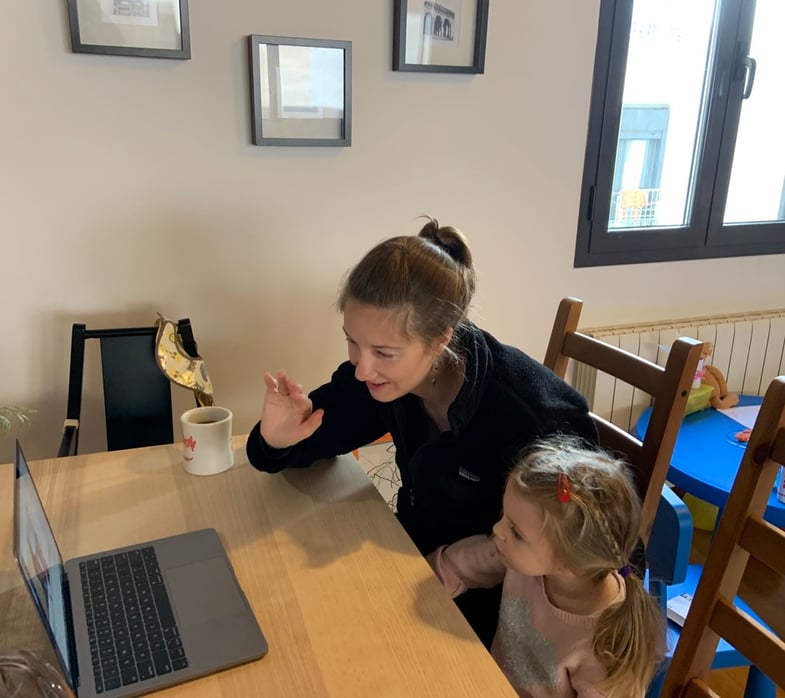
Despite the distance and the time difference we remain connected to Proctor. Our 400 mb/s symmetrical fiber-optic connection in Segovia’s historic quarter allows us to join faculty and department meetings and teach classes with no lag. Redesigning our classes for distance learning and providing Proctor students with a small part of the Segovia experience has given us much needed purpose and brought joy to our days. Lucia still occasionally asks when the next group of students will be arriving, but she also enjoys joining Spanish classes and seeing new Proctor students as we talk with them on-on-one and in small groups. We have stayed connected with Spanish teachers María and Rosa and assistant director Laura through tech trainings and just to check in. We miss seeing them in person of course but know they will be back in the Proctor en Segovia classrooms, at Las Tres BBBs and the Thursday market when it is safe. We have received messages every week from former students to check in on the Proctor en Segovia family. (Juana is doing just fine by the way!).
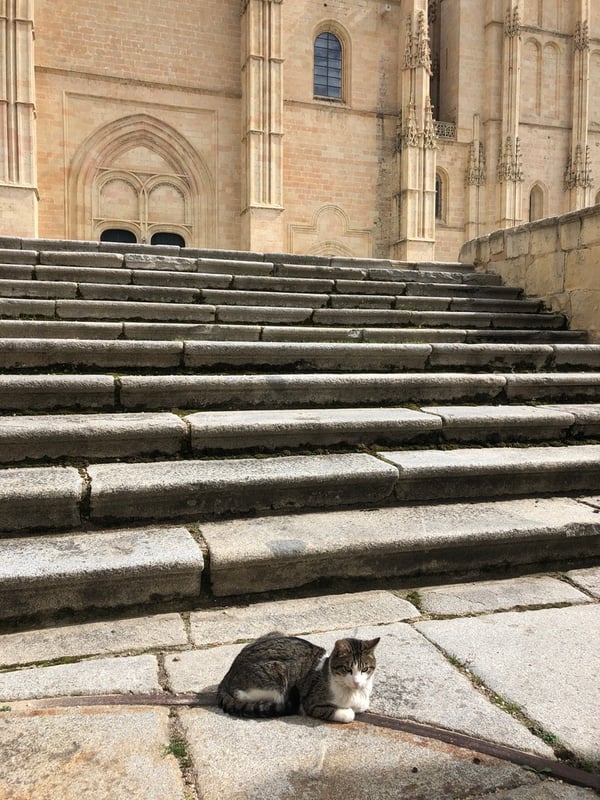
A cat soaks up the sun in the empty Cathedral courtyard.
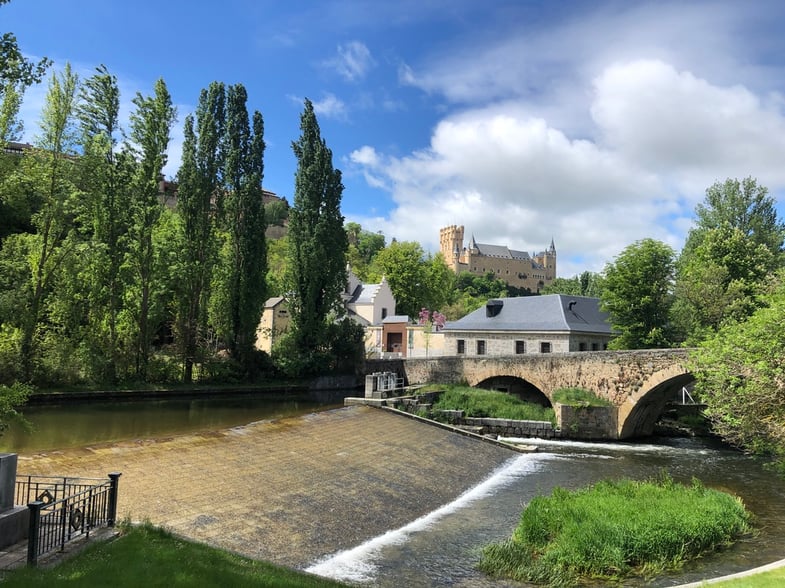
Recently the weather has turned warmer and, as of Saturday, adults are allowed to exercise in designated shifts according to age. Daily death statistics and ICU admissions have drastically decreased and stabilized. Segovia’s streets now have some life as kids play again in plazas with parents and siblings. This may still be the greatest challenge Spain has faced since the Spanish Civil War, dictatorship, and transition to democracy. We have confidence, however, that the Segovians and the Proctor community will get through this challenging period as before, with community support and perseverance. Now as we walk or jog past Segovia’s almost two-thousand-year-old aqueduct we take solace in its presence. It has witnessed other plagues and pandemics and still stands watch over the city. We hope that we, collectively, will use this opportunity to build a more sturdy, resilient, and sustainable future.









